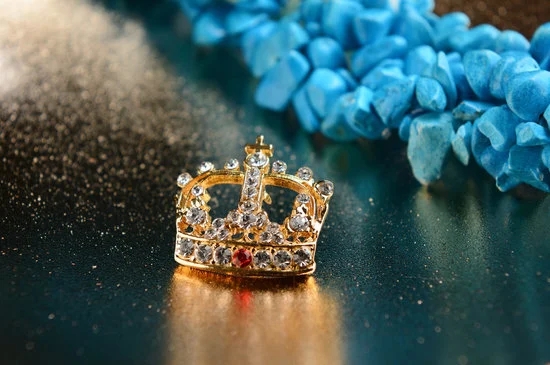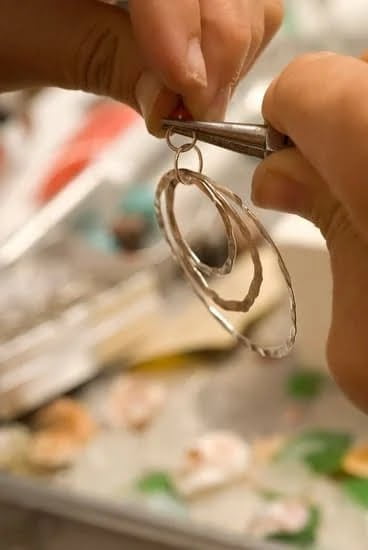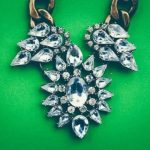The history of Christmas jewelry is a fascinating exploration of the cultural significance and symbolism of adornments during the holiday season. From ancient traditions to modern trends, jewelry has played a significant role in celebrating Christmas and its associated festivities. This article delves into the origins, influences, iconic symbols, materials, pop culture impact, modern trends, and collecting tips related to Christmas jewelry.
Tracing back to early civilizations and their holiday customs, the use of jewelry in Christmas celebrations can be linked to various cultural practices and beliefs. As we explore the roots of Christmas jewelry, we gain insight into how these traditions have evolved over time and spread across different regions.
Furthermore, the Victorian era had a remarkable influence on popularizing Christmas-themed jewelry. The elaborate designs and intricate details introduced during this period continue to inspire modern interpretations of holiday adornments. By examining this historical influence, we can understand how certain styles and motifs have become timeless symbols associated with Christmas festivities.
Early Origins
The history of Christmas jewelry can be traced back to ancient holiday traditions, where people adorned themselves with ornaments and accessories to celebrate important festivals. The use of jewelry during the Christmas season has deep roots in the custom of adorning oneself with festive and symbolic items.
In ancient times, the materials used for making Christmas jewelry were often natural elements such as plants, berries, and other organic materials. These early origins laid the foundation for the rich tradition of wearing special jewelry during the holiday season.
During ancient holiday traditions, certain symbols held great significance and were incorporated into decorative ornaments and jewelry. Mistletoe, holly, and bells were among the most commonly used symbols in early Christmas jewelry. These symbols represented themes of love, joy, and unity, and wearing them as jewelry was believed to bring blessings and good fortune during the festive season. The use of these iconic symbols in Christmas jewelry has continued to this day, connecting modern designs to their ancient origins.
The evolution of Christmas jewelry from ancient times to the present day showcases a fascinating progression in materials and craftsmanship. While early Christmas jewelry was often made from natural elements, modern designs feature a wide range of materials including traditional metals, gemstones, crystals, and even innovative synthetic materials. This evolution reflects not only advancements in technology and design trends but also the enduring appeal of adorning oneself with beautiful and meaningful pieces during this special time of year.
- The use of natural elements such as mistletoe or holly in early Christmas jewelry
- The significance of these symbols in ancient holiday traditions
- The connection between ancient holiday traditions and modern designs
Victorian Era Influence
The Victorian Era, spanning from 1837 to 1901, was a time of great cultural and industrial change. One aspect of this period that significantly influenced the history of Christmas jewelry was the rise of sentimental and symbolic adornments. During the Victorian era, jewelry became an important part of expressing emotions and sentiments, including those related to Christmas celebrations. This gave rise to the popularization of Christmas-themed jewelry as a way to commemorate the holiday season.
One significant development during the Victorian era was the mass production of jewelry, making it more accessible to a wider range of people. This led to an increase in demand for holiday-specific designs, such as pieces featuring symbols like holly, mistletoe, and bells. These symbols were emblematic of Christmas traditions and were seen as auspicious and joyful motifs for adornments.
Moreover, the Victorian era saw a revival in interest in medieval and renaissance art and traditions. This contributed to a resurgence in the popularity of traditional holiday symbols and themes being incorporated into jewelry design. The use of intricate metalwork and detailed embellishments also became characteristic of Victorian-style Christmas jewelry.
One iconic piece that emerged during this time was the Christmas charm bracelet, which allowed wearers to add new charms each year as part of their holiday traditions. These bracelets often featured motifs like Santa Claus, snowflakes, Christmas trees, or stockings-symbols that are still popular in modern-day holiday jewelry designs. The influence of Victorian-era jewelry on today’s Christmas adornments is undeniable, with many contemporary pieces drawing inspiration from this pivotal period in history.
| Victorian Era Influence | How They Popularized Christmas-Themed Jewelry |
|---|---|
| Mass production made jewelry more accessible | This contributed to an increased demand for holiday-specific designs. |
| The resurgence in interest in traditional holiday symbols | This contributed to reviving them as popular design elements for jewelry. |
Iconic Symbols
Christmas jewelry has a rich history, rooted in ancient holiday traditions and evolving over time to incorporate iconic symbols that are deeply intertwined with the spirit of the season. From mistletoe and holly to bells and snowflakes, these symbols have come to represent the joy, love, and magic of Christmas, making them popular choices for adornments during this festive time of year.
Iconic Symbols in Christmas Jewelry
- Mistletoe: In ancient cultures, mistletoe was seen as a symbol of peace and goodwill. It is commonly used in Christmas jewelry as a way to evoke feelings of love and harmony.
- Holly: The vibrant red berries and deep green leaves of holly have long been associated with the Christmas season. This beloved symbol is often featured in jewelry designs as a nod to tradition and nostalgia.
- Bells: Bells are a quintessential part of Christmas celebrations, ringing out messages of joy and merriment. They are frequently incorporated into holiday jewelry as charming charms or pendants.
These iconic symbols serve as more than just decorative elements in Christmas jewelry; they carry with them layers of cultural significance and emotional resonance that add an extra layer of meaning to the pieces that feature them. Whether worn as a personal expression of holiday spirit or given as a heartfelt gift, these symbols bring an added touch of enchantment to the festive season.
As materials and design techniques have evolved over time, so too has the interpretation and incorporation of these iconic symbols into Christmas jewelry. While traditional metal pieces were once predominant, modern designs now include gemstones, crystals, and innovative metalwork that give these timeless symbols new life. As technology continues to advance, it will be fascinating to see how future iterations continue to honor the storied history of Christmas jewelry while also embracing contemporary creativity.
Evolution of Materials
The history of Christmas jewelry is a fascinating journey that has evolved over time, especially when it comes to the materials used in creating these festive pieces. In the early origins of Christmas jewelry, traditional metal pieces such as gold and silver were prized for their durability and timeless appeal. These metals were often adorned with precious stones and intricate engravings to create stunning holiday-themed designs.
During the Victorian era, there was a significant shift in the materials used for Christmas jewelry. The Victorians popularized the use of gemstones and crystals in their holiday pieces, adding a touch of color and sparkle to traditional designs. This change in materials reflected the cultural shift towards ornate and decorative styles during this period.
In modern times, Christmas jewelry has continued to evolve, with an emphasis on incorporating a wide variety of materials into holiday designs. While traditional metals like gold and silver remain popular choices, gemstones such as rubies, emeralds, and sapphires are also widely used to add vibrant pops of color to Christmas jewelry. Additionally, crystals have become a staple in holiday designs, offering a dazzling alternative to traditional gemstones.
| Historical Period | Main Materials Used |
|---|---|
| Early Origins | Gold, Silver |
| Victorian Era | Gemstones, Crystals |
| Modern Times | Gold, Silver, Gemstones, Crystals |
The evolution of materials in Christmas jewelry reflects not only changes in fashion and design trends but also cultural developments throughout history. Whether crafted from traditional metals or adorned with modern gemstone and crystal designs, Christmas jewelry continues to hold its allure as a cherished part of holiday traditions around the world.
Pop Culture Impact
Movies
Christmas movies have played a significant role in shaping the popularity of Christmas jewelry. From classic films like “It’s a Wonderful Life” to modern favorites like “Love Actually,” the festive and heartwarming themes of these movies often feature characters adorned with beautiful holiday-themed jewelry. This not only highlights the importance of jewelry as a symbolic element of Christmas, but also serves as inspiration for viewers to incorporate similar pieces into their own holiday attire.
Music
The influence of Christmas music on the appeal of holiday jewelry cannot be understated. Songs like “Jingle Bells,” “Silent Night,” and “Deck the Halls” often evoke images of festive gatherings, decorations, and, inevitably, dazzling ornaments and accessories. Through lyrics that reference traditional holiday symbols and imagery, music has helped to strengthen the association between Christmas and jewelry, further contributing to its popularity during the holiday season.
Pop Culture Collectibles
In addition to movies and music, pop culture collectibles related to iconic Christmas films or characters have also spurred interest in themed jewelry. Officially licensed merchandise featuring beloved characters such as Rudolph the Red-Nosed Reindeer or motifs from popular films like “Home Alone” have led to an increase in demand for unique and nostalgic holiday pieces. The sentimental value attached to these collectibles has contributed to the growing trend of incorporating them into personal collections.
Modern Trends
In recent years, Christmas jewelry has experienced a resurgence in popularity, with modern trends embracing a wide variety of styles and designs that cater to different fashion preferences. From traditional pieces to more contemporary and eclectic designs, there is something for everyone when it comes to holiday-themed jewelry.
Eclectic and Unique Pieces
One of the current trends in Christmas jewelry is the rise of eclectic and unique pieces that offer a fresh take on traditional holiday motifs. Designers are incorporating unconventional materials such as wood, fabric, or recycled materials into their jewelry creations, resulting in one-of-a-kind pieces that stand out from the crowd. These non-traditional designs add a quirky and whimsical touch to festive ensembles, appealing to those who prefer an unconventional approach to holiday fashion.
Minimalist and Modern Designs
On the other end of the spectrum, minimalist and modern designs have also made their mark in the world of Christmas jewelry. Clean lines, geometric shapes, and understated elegance characterize this trend, appealing to individuals who prefer a more contemporary aesthetic. These pieces often feature subtle nods to traditional Christmas symbols, allowing wearers to showcase their holiday spirit in a chic and sophisticated manner.
Personalized and Customizable Options
Another popular trend in Christmas jewelry revolves around personalized and customizable options that allow consumers to create meaningful pieces tailored to their individual tastes. From custom-engraved pendants with personal messages or initials to birthstone-accented charms representing loved ones, these personalized touches add sentimental value to holiday jewelry, making them cherished keepsakes for years to come.
As the demand for unique and stylish Christmas jewelry continues to grow, it is clear that this timeless tradition remains relevant in today’s fashion landscape. Whether it’s through whimsical designs, sleek modern creations or personalized accents, there is no shortage of options when it comes to embracing the festive spirit through jewelry.
Collecting Christmas Jewelry
For enthusiasts of jewelry and holiday traditions, collecting Christmas jewelry can be a rewarding and fascinating hobby. The history of Christmas jewelry dates back centuries and encompasses a wide variety of styles, materials, and designs. Whether you are just starting your collection or looking to expand it, there are a few tips that can help you navigate the world of holiday-themed pieces.
Firstly, it is important to educate yourself about the history of Christmas jewelry. Understanding the origins and significance of different pieces can enhance your appreciation for the items in your collection. From ancient holiday traditions to the influence of the Victorian era, delving into the rich history of Christmas jewelry can provide valuable context for your collecting journey.
When starting a collection of Christmas jewelry, consider focusing on specific iconic symbols associated with the holiday season. Mistletoe, holly, bells, and snowflakes are just a few examples of symbols that have been popular motifs in holiday-themed pieces throughout history. By choosing a theme or symbol to collect, you can create a cohesive and meaningful assortment of jewelry that reflects the spirit of Christmas.
In addition to traditional metal pieces, modern gemstone and crystal designs have become increasingly popular in Christmas jewelry. From sparkling snowflake pendants to colorful holly brooches, there is a wide range of contemporary styles to explore. Keeping an eye on current trends and emerging designers can help you stay informed about new additions to your collection.
Conclusion
In conclusion, the history of Christmas jewelry reveals a fascinating journey through time, showcasing the enduring appeal and cultural significance of these holiday-themed pieces. From their early origins in ancient traditions to the influence of the Victorian era and the evolution of materials and designs, Christmas jewelry has continued to captivate people around the world.
The use of iconic symbols like mistletoe, holly, and bells has added depth and meaning to these adornments, while modern trends and pop culture have further popularized Christmas jewelry.
Throughout history, Christmas jewelry has not only served as decorative accessories but also as meaningful symbols of tradition, celebration, and joy. The sentimental value attached to these pieces often makes them cherished heirlooms passed down through generations. Collecting Christmas jewelry has become a beloved hobby for many enthusiasts, offering a way to connect with the past while reveling in the festive spirit of the holiday season.
As we reflect on the enduring appeal and cultural significance of Christmas jewelry throughout history, it becomes clear that these pieces hold a special place in our hearts. Whether it’s a vintage brooch from the Victorian era or a modern gemstone necklace adorned with holiday motifs, Christmas jewelry continues to be cherished by individuals who appreciate its beauty and connection to beloved traditions.
As we continue to celebrate the holiday season year after year, these timeless adornments will undoubtedly remain an integral part of our festivities and a tribute to our shared cultural heritage.
Frequently Asked Questions
What Is the History Behind Christmas Ornaments?
The history of Christmas ornaments dates back to the 16th century in Germany, where people used to decorate their trees with apples, nuts, and other edible items. Over time, this tradition evolved, and ornamental decorations started to be made from glass, metal, and other materials.
What Are the Oldest Christmas Ornaments?
The oldest Christmas ornaments are believed to be the decorations used by early Christians in ancient Rome. They would hang small metal discs on trees to symbolize the sun. Additionally, in modern times, some of the oldest surviving Christmas ornaments date back to the 17th century and are made from materials such as paper, wood, and glass.
Why Are Ornaments Related to Christmas?
Ornaments are related to Christmas because they are a significant part of the tradition of decorating trees during the holiday season. This tradition is said to have originated in Germany and was brought to other parts of the world through various cultural influences. Today, Christmas ornaments are a symbol of joy, celebration, and festivity during this special time of year.

Welcome to my jewelry blog! My name is Sarah and I am the owner of this blog.
I love making jewelry and sharing my creations with others.
So whether you’re someone who loves wearing jewelry yourself or simply enjoys learning about it, be sure to check out my blog for insightful posts on everything related to this exciting topic!





